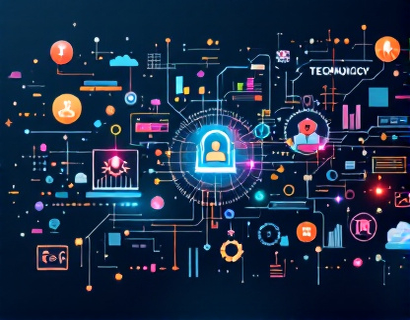Secure Digital Asset Escrow Empowering Web3 Transactions with Trust and Seamless Exchanges
The rapid advancement of blockchain technology has revolutionized digital asset ownership and trading creating new opportunities and challenges in equal measure. Secure digital asset escrow services have emerged as critical facilitators in the burgeoning Web3 ecosystem offering a protective layer that safeguards value while building confidence among buyers and sellers. By acting as neutral third parties escrow platforms ensure that each side fulfills their obligations before assets or funds are released. This uninterrupted assurance is fundamental to high value domain name transfers token exchanges and non fungible token transactions that characterize modern decentralized markets. In this comprehensive article we will explore the core principles behind digital escrow services examine their benefits analyze operational workflows and highlight best practices regulatory considerations and future trends. Whether you are an experienced digital asset trader or a Web3 enthusiast seeking to deepen your understanding this article provides an educational and informative roadmap for leveraging secure escrow solutions in your transactions.
Understanding Secure Digital Asset Escrow and Its Role in Web3
At its essence secure digital asset escrow is a contractual arrangement in which a trusted intermediary holds assets or funds during the execution of a transaction. This arrangement mitigates counterparty risk by ensuring that no party can access assets until predefined conditions have been satisfied. As the Web3 landscape expands beyond cryptocurrency to include tokenized assets decentralized finance protocols and unique digital collectibles the need for tailored escrow services has grown substantially. Escrow platforms integrate blockchain technology and smart contracts to automate key processes provide transparency and prevent fraud. Participants can verify each step through immutable distributed ledgers eliminating the need for blind trust. The result is a streamlined exchange process that empowers traders and domain buyers to confidently engage in high stake deals without fear of default misrepresentation or malicious interference.
History and Evolution of Digital Escrow Services
The concept of escrow has existed for centuries as a trust mechanism in traditional finance real estate and international trade. Early escrow transactions relied on manual contracts and third party fiduciaries whose reputations determined the outcome of disputes. With the digital revolution many of these legacy processes migrated online but remained vulnerable to hacking miscommunication and jurisdictional conflicts. The introduction of blockchain technology in the decade following 2009 enabled a paradigm shift toward programmable escrow solutions. Smart contracts executed on decentralized networks reduced reliance on human intermediaries minimized latency and ensured compliance with predetermined rules. Over time platforms specializing in digital asset escrow have incorporated multi signature wallets verifiable credentials and cross chain interoperability to support complex Web3 ecosystems. Today these services bridge traditional trust frameworks with the transparency and security offered by distributed ledger technology.
Key Benefits of Secure Digital Asset Escrow
Digital asset traders and Web3 enthusiasts derive numerous advantages from employing secure escrow services. First enhanced security measures protect against fraud by locking assets in a neutral account until all parties fulfill contractual obligations. This mechanism reduces instances of payment default misdelivery or unauthorized asset transfers. Second escrow platforms provide transparency through real time transaction tracking and immutable records enabling participants to monitor progress and eliminate disputes based on misunderstandings. Third the automation of processes via smart contracts accelerates settlement times and reduces operational costs associated with manual verification. Fourth escrow services often include dispute resolution frameworks that outline clear protocols for resolving conflicts with minimal downtime. Together these benefits foster trust in emerging markets attract institutional investment and expand participation from retail users previously deterred by counterparty risk.
How Secure Digital Escrow Works in Web3 Transactions
Implementing secure digital asset escrow in Web3 involves several core components working in concert to facilitate seamless exchanges. Initially a buyer and seller agree on transaction terms including asset type quantity price and any special conditions such as delivery milestones or performance verifications. The parties then submit relevant details and funds or assets to the escrow service. Blockchain or smart contract based platforms generate a unique escrow instance often backed by a multi signature wallet or time locked contract. Once the escrow is funded the platform monitors on chain events or off chain confirmations to verify that conditions have been met. Upon successful validation the escrow contract automatically releases funds or digital assets to the respective party. If disputes arise a predefined resolution protocol engages mediators or arbitrators who assess evidence and determine appropriate outcomes. The escrow framework ensures that no single participant can bypass the agreed terms preserving integrity and fairness throughout the transaction cycle.
Parties Involved in a Digital Escrow Transaction
Understanding roles within a secure digital asset escrow transaction is essential for participants seeking clarity and confidence. The primary parties include the buyer who initiates the purchase of digital assets and the seller who owns or controls the asset to be transferred. The neutral third party or escrow provider facilitates the interaction holds funds in custody and executes the release of assets upon satisfaction of conditions. In the case of smart contract enabled escrow the code itself acts as an impartial agent enforcing rules without human bias. Dispute resolvers or arbitrators function as backup mechanisms bringing expertise to complex disagreements that automated systems cannot resolve. Additionally trusted auditors may verify compliance with legal and regulatory standards ensuring that transactions adhere to anti money laundering and know your customer requirements when necessary.
Step by Step Workflow for Digital Asset Escrow
A typical secure digital asset escrow workflow encompasses five essential steps. First initiation involves mutual agreement on key terms and creation of the escrow contract or instance. Participants provide identity verifications and digital signatures to authenticate their involvement. Second funding requires the buyer or seller to deposit the specified crypto tokens stablecoins or domain credentials into the escrow account or smart contract. Third verification is performed through automated checks or manual review ensuring asset authenticity and sufficiency of funds. Fourth execution triggers release mechanisms once conditions are satisfied for example confirmation of domain transfer or receipt of tokens on target blockchain. Finally confirmation and settlement deliver assets to recipients finalize the transaction on ledger records and close the escrow instance. Each step includes audit logs that can be reviewed by participants to ensure transparency and accountability.
Use Cases for Secure Digital Asset Escrow in Web3
Secure digital asset escrow services enable a wide range of applications across evolving Web3 domains. In the realm of non fungible tokens escrow protects high value NFT purchases by holding both payment and digital asset keys until artwork provenance and authenticity are verified. Decentralized finance transactions benefit from escrow when liquidity providers lock assets under predefined conditions to earn yields or support lending markets. Domain name transfers leverage escrow to ensure ownership transfers are completed accurately while payment remains secure. Token sales and initial coin offerings often utilize escrow to safeguard investor funds by releasing them based on project milestones. Cross chain asset swaps implement escrow to mitigate bridging risks and centralize dispute resolution during complex multi blockchain interactions. Each of these use cases underscores the versatility and necessity of escrow in fostering trusted Web3 commerce.
Key Features of a Robust Digital Escrow Platform
Selecting a reliable escrow platform requires attention to several core features that underpin security and user experience. Multi signature wallet support ensures that multiple keys are required to authorize transactions preventing single point failures. Smart contract integration automates conditional logic and enforces transparent execution without manual intervention. Cross chain interoperability broadens support for assets residing on different blockchains simplifying diverse portfolio management. Identity verification and compliance modules help adhere to regulatory requirements while minimizing friction for users. Real time monitoring dashboards provide live updates on escrow status analytics and historical logs for auditing purposes. Flexible dispute resolution frameworks outline clear protocols and escalation paths reducing downtime in conflict scenarios. Finally responsive customer support and developer APIs empower users to customize workflows and integrate escrow services directly into decentralized applications.
Challenges and Solutions in Digital Asset Escrow
While digital asset escrow introduces significant advantages it also faces unique challenges requiring innovative solutions. Smart contract vulnerabilities can expose escrow instances to exploits if code is not audited and maintained. Platforms must invest in rigorous security audits and continuous monitoring to identify and remediate potential threats. Dispute resolution may encounter jurisdictional complexities when participants reside in different countries. Integrating neutral arbitrators familiar with cross border digital property laws can streamline verdicts. Scalability issues arise during periods of network congestion or high transaction volume. Layer two scaling solutions and gas optimized contract designs help maintain performance. Regulatory uncertainty can deter participation until clearer guidelines emerge. Active engagement with policy makers and transparent compliance protocols help escrow services adapt to evolving legal landscapes while preserving user privacy and security.
Best Practices for Secure Digital Escrow Transactions
To maximize trust and minimize risk participants should adhere to best practices when engaging with digital asset escrow services. Always verify the reputation and security credentials of the escrow provider including audit reports and code reviews. Conduct due diligence on counterparties by requesting verifiable identity proofs and transaction history. Clearly outline transaction terms in writing or through smart contract parameters including dispute resolution clauses timelines and required confirmations. Maintain secure key management practices such as hardware wallets and multi factor authentication to protect access credentials. Monitor escrow progress regularly via provided dashboards and communicate promptly if issues arise. Preserve detailed records of all communications agreements and transaction receipts to facilitate potential dispute resolution or compliance audits. By combining proactive risk management with transparent communication participants can confidently navigate high value exchanges in the Web3 ecosystem.
Regulatory Considerations for Digital Escrow Services
As digital asset markets mature regulators worldwide are crafting guidelines aimed at consumer protection financial stability and anti illicit finance measures. Escrow platforms operating in this environment must implement robust know your customer procedures to verify user identities and assess risk profiles. Anti money laundering and countering financing of terrorism protocols require transaction monitoring and reporting of suspicious activities to designated authorities. Licensing requirements vary by jurisdiction and may classify certain escrow services as financial intermediaries subject to additional capital or audit obligations. International transactions introduce cross border compliance complexities where data privacy laws and embargo restrictions must be respected. By collaborating with legal experts and regulatory bodies escrow providers can design systems that balance innovation with legal adherence ensuring sustainable growth and maintaining user trust.
Future Trends in Secure Digital Asset Escrow
The trajectory of secure digital asset escrow will be shaped by emerging technologies and market dynamics in the coming years. Artificial intelligence and machine learning algorithms will augment fraud detection capabilities by identifying anomalous patterns in escrow transactions. Decentralized autonomous organization frameworks may govern escrow services through token based voting enhancing community driven oversight. Integration with decentralized identity standards will streamline onboarding while preserving privacy using zero knowledge proofs. Cross chain protocols and interoperability bridges will expand support for novel blockchains and layer two networks enabling seamless global asset transfers. The convergence of real world asset tokenization such as tokenized commodities and securities will drive demand for sophisticated escrow structures that accommodate regulatory compliance and complex legal arrangements. Ultimately the evolution of secure digital escrow will mirror the broader growth of Web3 redefining trust mechanisms in a digital age.
Conclusion
Secure digital asset escrow services form the backbone of trust and efficiency in modern Web3 ecosystems. By combining time honored principles of third party custodianship with cutting edge blockchain and smart contract automation these platforms empower participants to engage in high value transactions with unparalleled confidence. From mitigating counterparty risk and enabling transparent workflows to supporting diverse use cases across finance art and metaverse economies digital escrow solutions continue to drive innovation and institutional adoption. Embracing best practices regulatory compliance and ongoing technological advancements will ensure that escrow remains a cornerstone of the evolving digital asset landscape. As you explore the world of decentralized finance tokenized properties and digital collectibles consider integrating secure escrow mechanisms to safeguard your exchanges and unlock new opportunities with trust and transparency at their core.










































